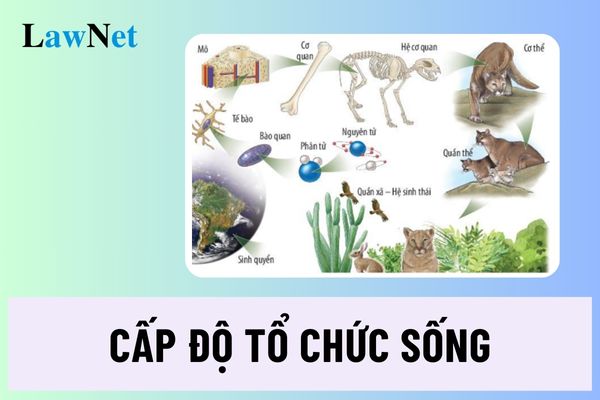What is the hierarchy of life? An overview of hierarchy of life is taught in which grade in Vietnam?
Vietnam: What is the hierarchy of life?
Based on Section 8 of the General Education Program for the Biology subject issued together with Circular 32/2018/TT-BGDDT, the hierarchy of life is defined as: a system formed by the interaction mechanisms between structural elements, between functions, and between structure and function.
The biological organisation has different levels with distinct emergent properties, existing in a hierarchical order: molecule - cell - organism - population - community (ecosystem) - biosphere.
>> View the full General Education Program for the Biology subject issued together with Circular 32/2018/TT-BGDDT: Download

What is the hierarchy of life? An overview of hierarchy of life is taught in which grade in Vietnam? (Image from the Internet)
An overview of hierarchy of life is taught in which grade in Vietnam?
Based on the General Education Program for the Biology subject issued together with Circular 32/2018/TT-BGDDT, the overview of the hierarchy of life is taught to 10th-grade students.
In particular, the general introduction to the hierarchy of life includes:
- The concept and characteristics of levels of biological organization- Levels of biological organization- The relationship between levels of biological organization- The concept and characteristics of the hierarchy of life
Requirements for 10th-grade students when learning about the general introduction to the hierarchy of life:
- Define the concept of the hierarchy of life.- Describe common characteristics of levels of biological organization.- Levels of biological organization- Differentiate between levels of biological organization based on diagrams.- The relationship between levels of biological organization- Explain the relationships between levels of biological organization.
How do Biology subject orient the method of forming and developing the main qualities and general abilities for 10th grade students in Vietnam?
Based on Section 6 of the General Education Program for the Biology subject issued together with Circular 32/2018/TT-BGDDT, the Biology subject focuses on forming and developing essential qualities and general competencies for 10th-grade students as follows:
(1) Methods for forming and developing essential qualities
Through organizing students to participate in practical activities, excursions, discussions, group work, research projects, etc.
The Biology subject educates students about the love of nature, pride in the diversity and richness of Vietnam’s biological resources, civic responsibility in preserving, promoting, and conserving the diversity and richness of natural resources; trains students in diligence, honesty in studies, and scientific research.
(2) Methods for forming and developing general competencies
The Biology subject has many advantages in forming and developing the general competencies defined in the overall program.
Developing these competencies also aims to enhance the quality of biology education.
- Self-regulation and self-study competency:
In Biology teaching, self-regulation is formed and developed through practical activities, projects, designing experimental activities in the laboratory or field trips, especially in exploring the living world.
The focus on self-regulation, proactiveness in teaching methods that the Biology subject emphasizes is an opportunity to help students form and develop self-study competency.
- Communication and cooperation competency:
In the Biology subject, seeking and exchanging information during observation, formulating scientific hypotheses, making and executing plans to verify hypotheses, collecting and processing data, aggregating results, and presenting research reports help students develop communication and cooperation skills.
Especially, when conducting practical lessons, research projects, group experience activities, each member takes responsibility for different tasks, exchanging information, presenting, and sharing ideas to complete a common task.
These are opportunities provided by the Biology subject to develop communication and cooperation skills in students.
- Problem-solving and creativity competency:
Problem-solving and creativity are distinctive activities in exploring and discovering the living world; therefore, developing this competency is one of the core educational contents of the Biology subject.
This general competency is formed and developed through organizing students to propose problems, formulate hypotheses, make and execute plans to explore diverse phenomena in the living world close to daily life.

